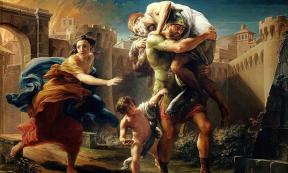Ancient Rome
Welcome to Ancient Origins section on Ancient Rome, one of the most fascinating and influential civilizations in human history. From its legendary founding in 753 BC to its collapse in 476 AD, Rome left an indelible mark on Western culture, politics, law, and architecture, shaping our modern world in countless ways.
Whether you are a student, a history enthusiast, or simply curious about this ancient civilization, this section has hundreds of articles that will take you on a journey through the rise and fall of Rome, its legendary emperors, its iconic landmarks, and its enduring legacy.
Explore the stories of Rome's legendary figures, marvel at the grandeur of its monumental buildings, and learn about the customs, beliefs, and achievements of the Romans, who created one of the most enduring and influential civilizations of all time. Join us as we delve into the world of Ancient Rome, where the past meets the present and the legacy of Rome lives on.






































